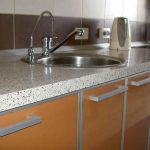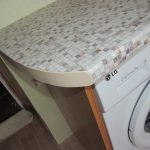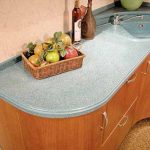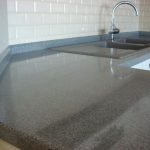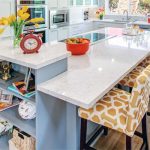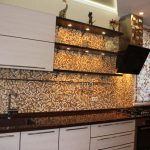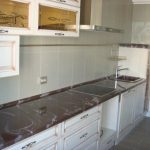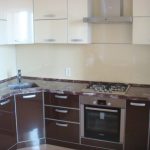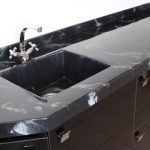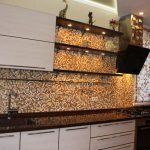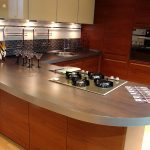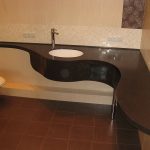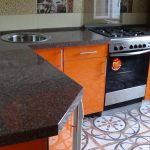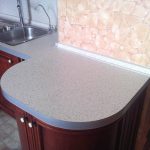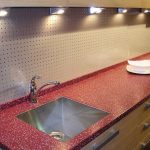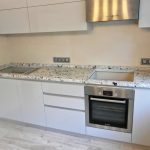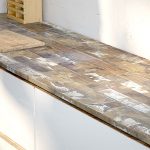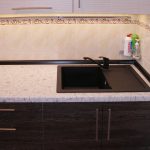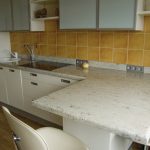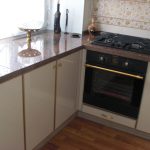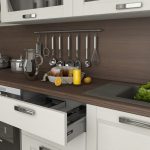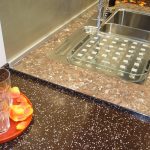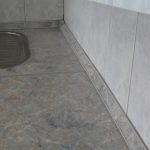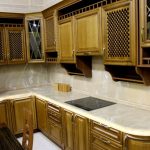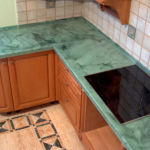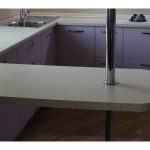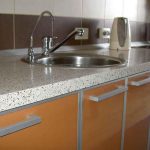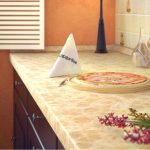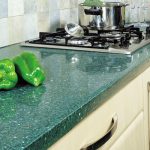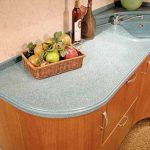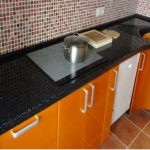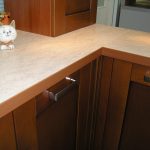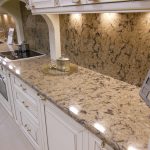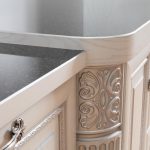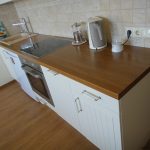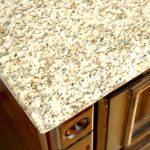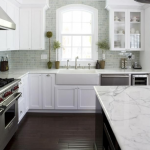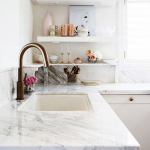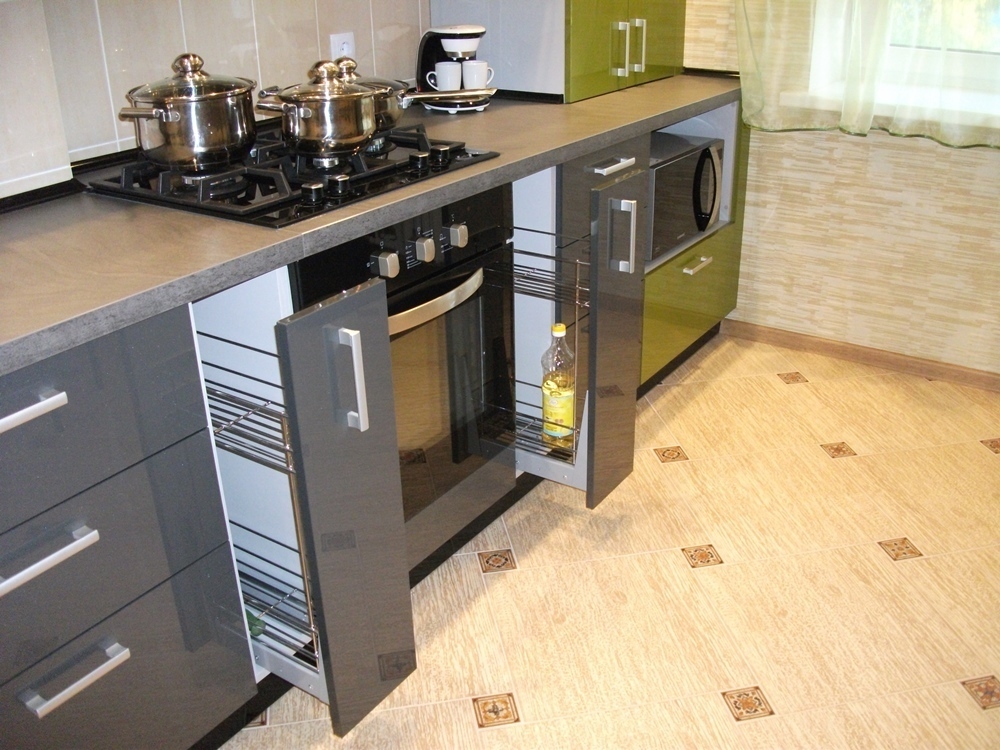 Bottle rack in the kitchen or set the pan not only in the nightstand.
Bottle rack in the kitchen or set the pan not only in the nightstand.
Porcelain stoneware - the queen of the kitchen!
The porcelain table top is a base, the upper plane of which is lined with porcelain tiles with minimal tile joints. The butt is finished with the same material, or supplemented with another, suitable for texture, color and quality.
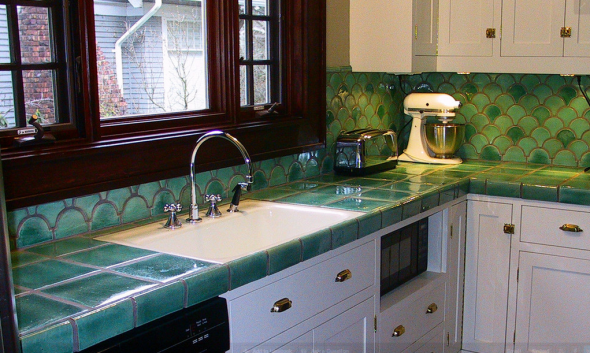
Countertops made of granite have become popular because of their practicality and durability, but their price is quite high.
How to make such a tabletop? What to look for when preparing the base and choosing a tile? What are the disadvantages and advantages of stoneware surface? Consider the answers to these and a number of other questions.
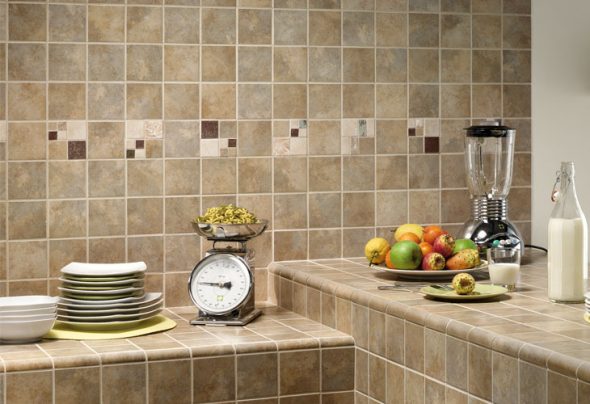
A cheaper alternative to granite countertops is a ceramic granite countertop.
Content
Features manufacturing worktops
The facing of the kitchen work plane can be ordered by the master tiler, and with some skills and tools, you can actually do it yourself.

Of all the finishing materials, ceramic tile is perhaps the oldest and most familiar.
The secret of success in making porcelain stoneware countertops depends on the quality of foundation preparation. It is important to make the entire structure as rigid as possible to avoid movement and deformation during operation.
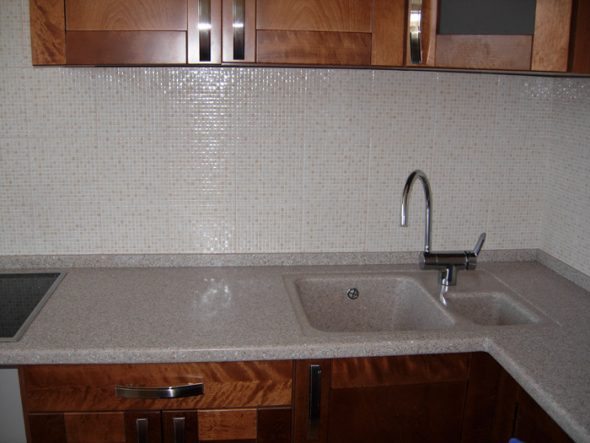
It's no secret that the main quality of the kitchen is maximum convenience and functionality.
- Foundation preparation
Any suitable - wooden, metal, concrete, plastic.The easiest way to veneer concrete, porcelain tiles just fit on its surface. Minus concrete base in its weight.
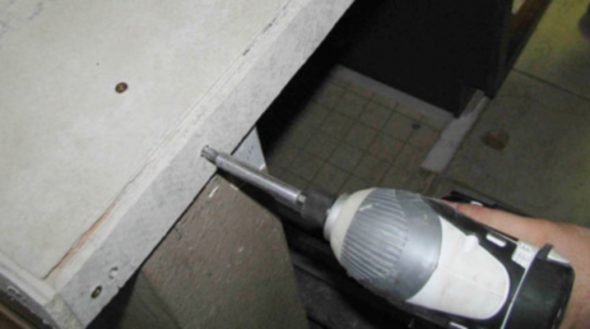
For an apartment in a high-rise building, it is not applicable.
The metal base is treated with appropriate primer compositions, the steel mesh is tensioned, to which suitable tile adhesive is applied. The treated surface is dried. Lay the selected tile on top.
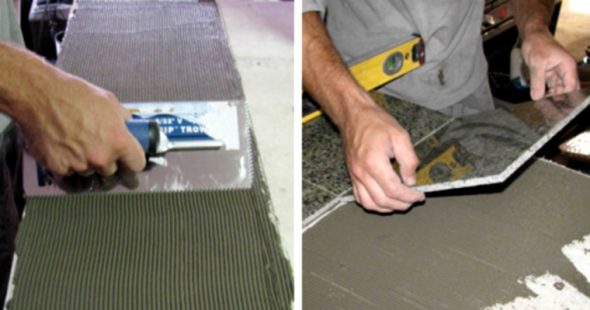
You apply mix with sites, otherwise in 15 minutes it will become covered with a film and will lose elasticity.
For plastic kitchen worktops, MDF or chipboard are used as the base. The constructions made of these materials are rather strong and allow to put heavy granite on top.The preparation of the plastic plane can be done in two ways - by fixing the mesh and more simply — direct gluing of tiles with silicone.
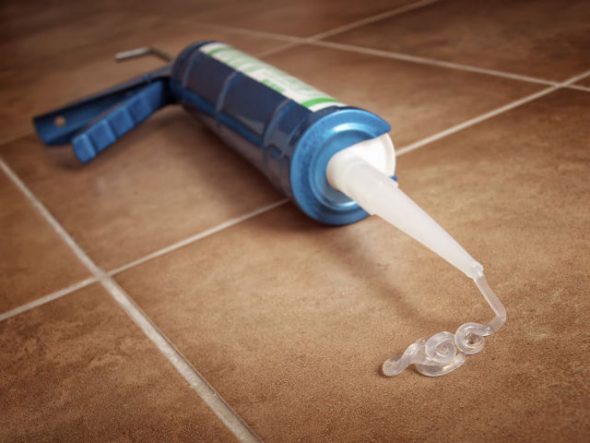
Check the flatness of each tile with a short level and adjust it until the glue hardens.
For wooden surfaces, due to the nature of the tree "play" from temperature and humidity changes, fix the rigidity of the base is especially important. Structural strength is achieved by fixing two layers of thick birch plywood.
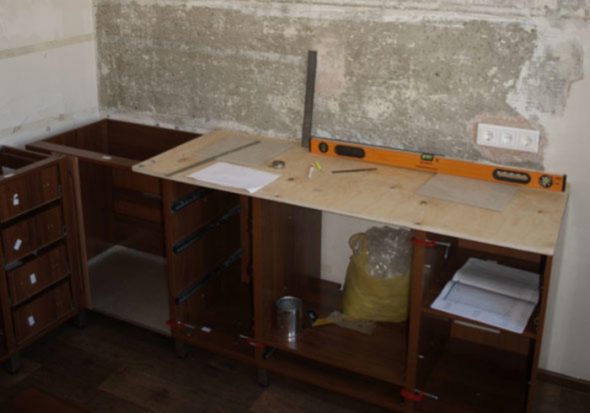
On top you can additionally put a sheet DSP.
All wooden parts are treated with protective impregnation from mold, fungi, to prevent wood rotting in conditions of high humidity.
- Laying. Grout.
- Porcelain tile is laid on the prepared substrate with tile adhesive or “liquid nails” adhesive.
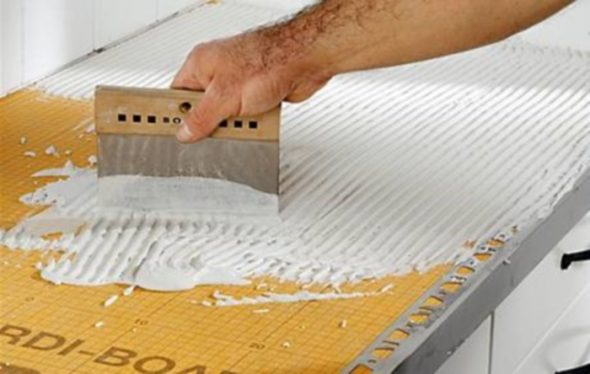
Using the notched side of the comb, remove the excess in order to obtain uniform gouge grooves.
- Laying method (diamonds, rows, herringbone, ornament) depends on the chosen kitchen design. To get a visually monolithic surface, the width of the seams is minimal.

To emphasize the pattern, the styling rhythm, on the contrary, distinguish seams.
- For grouting, it is recommended to use moisture resistant epoxy grout. A conventional cement-based blend requires additional protection with hydrophobic impregnation.
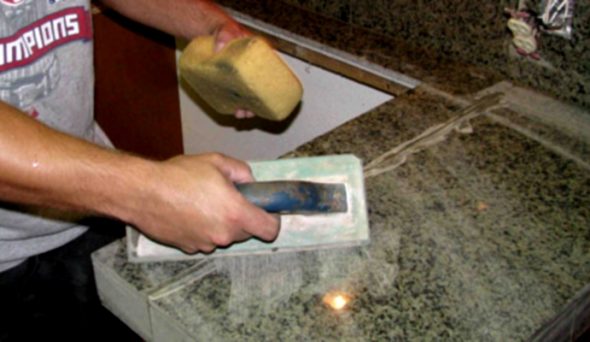
Impregnation is applied to a well-“matured” grout, not earlier than in a week.
Economic effect
With all its advantages, strength, decoration, ease of manufacture — This is an inexpensive type of cladding. The cost of the cost of its manufacture is comparable to the price of PVC tabletops with much more positive aesthetic and operational qualities.
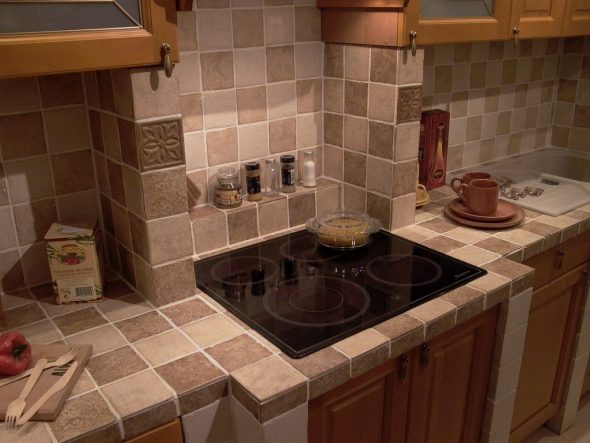
The tile countertop can wipe quickly and easily.
Having picked up the porcelain tile imitating a natural stone (marble, granite), it is possible to receive the magnificent covering which is not inferior to natural and even exceeding it in indicators of durability. For the price, a tabletop made of porcelain stoneware will cost ten times cheaper than a similar stone.
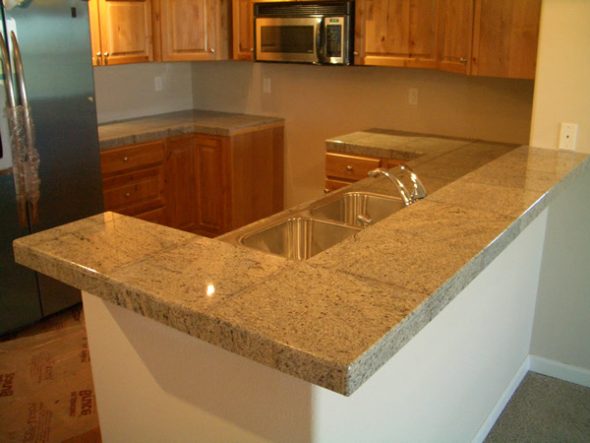
You can also put on top coasters for hot dishes.
The artificial stone used to create monolithic surfaces is also inferior to porcelain stoneware in strength, and is much higher in cost.
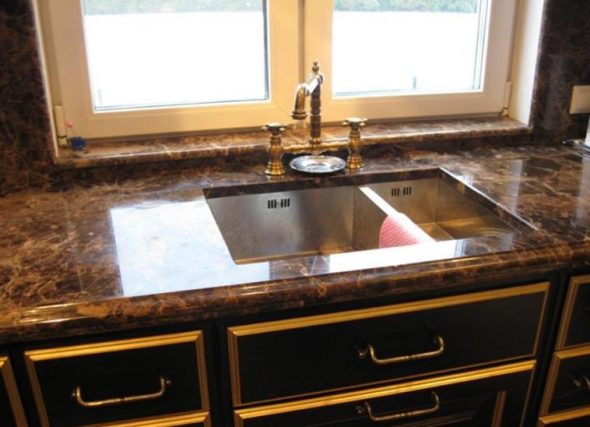
The tile is not afraid of physical impact, easy to clean and has a nice appearance.
The working plane of porcelain stoneware can be revetted with your own hands, even from the remnants of the tile left over from the repair of other premises. The main thing is to group the materials in accordance with the color, texture and thickness of the tiles.
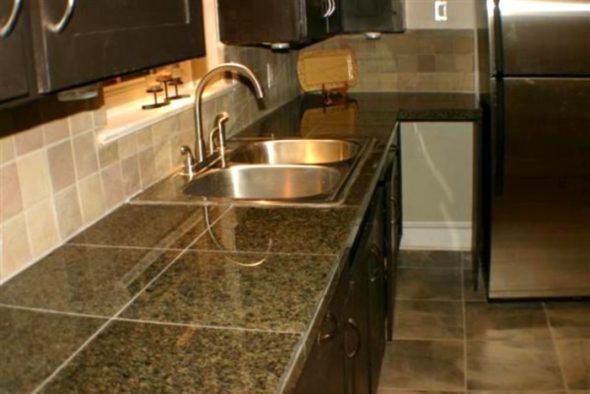
If you create such a tabletop yourself, it will become the pride of the whole family.
disadvantages
Weak point - inter tile stitches. Grout over time can lose its freshness, get a dirty shade. To correct such a defect is possible only by replacing the grout.
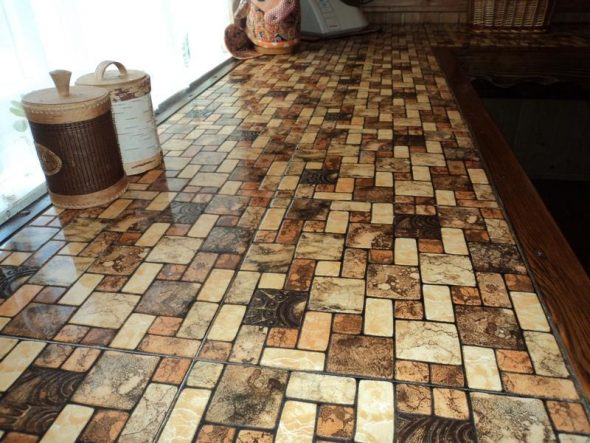
When choosing material for a tile countertop, consider all the pros and cons of this material.
Porcelain stoneware is very durable material and difficult to cut. For cutting tiles use diamond disc. To cut porcelain tiles in high quality, you need to have the skill.
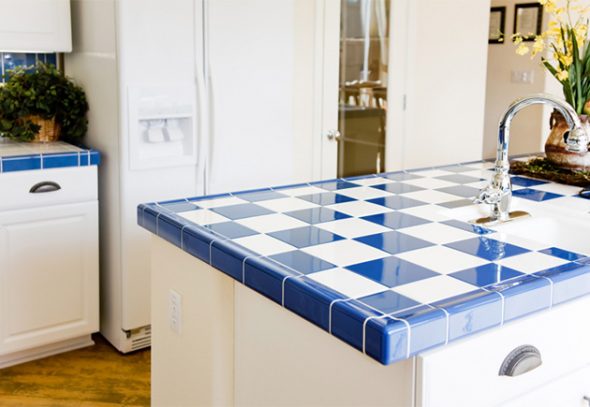
Porcelain tile is very durable and not inferior in its properties to natural stone.
Technical and operational advantages
Requirements for kitchen worktop - waterproof, easily washable surface, aesthetics.
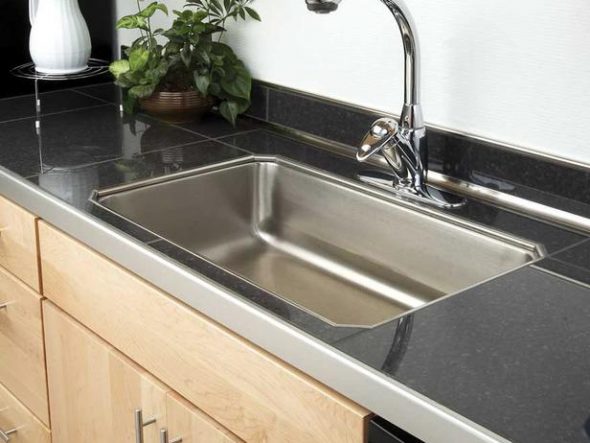
The available tile color effect options now allow you to create absolutely any solution in your kitchen.
Porcelain stoneware is the perfect finish. Technical characteristics (strength, moisture and heat resistance) make it an indispensable finishing material.

The color of the tabletop can be completely different.
Fits any kind of porcelain stoneware. Attention when choosing it is worth paying for the smoothness of the tile. If the surface is uneven, care of it is difficult, and the processing of food particles will get stuck in the embossed pattern.
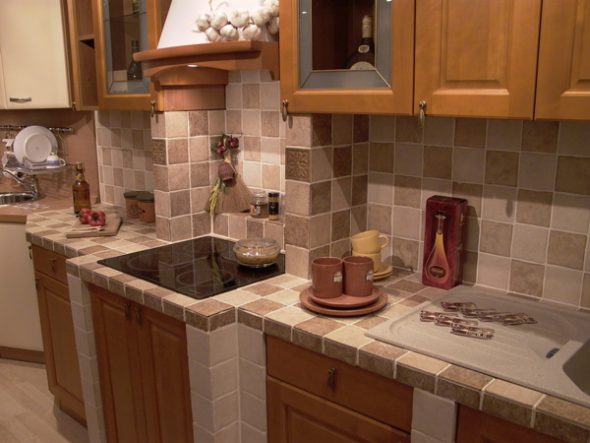
Do not use ribbed tiles on a horizontal surface.
Porcelain stoneware surface in kitchen design
A significant place is allocated to the tabletop in any kitchen; this detail of the interior influences the overall mood, sometimes it sets the style for the whole interior. On the other hand, it is massive and solid, done for a long period.
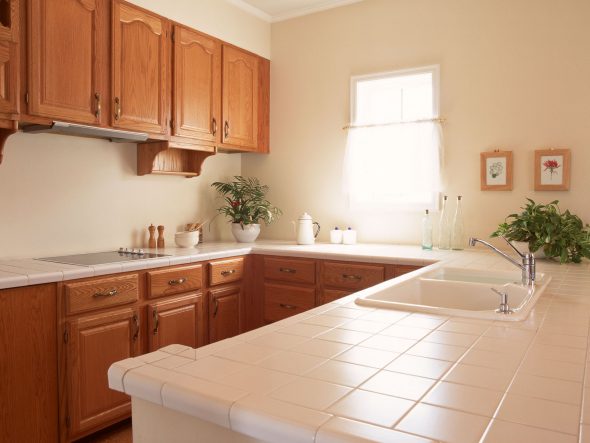
The end result should fit into the overall color scheme of the kitchen.
The walls can be repainted, kitchen facades replaced, but changing the tabletop is troublesome and expensive, so you need to carefully select the material for its manufacture from the very beginning.

The size of the tiles must be selected based on the size of the room.
Finishing "under the tree" will bring warmth and comfort to the interior. Tile "under the clinker" will give brutality, severity of knightly times and the feeling of a medieval castle.
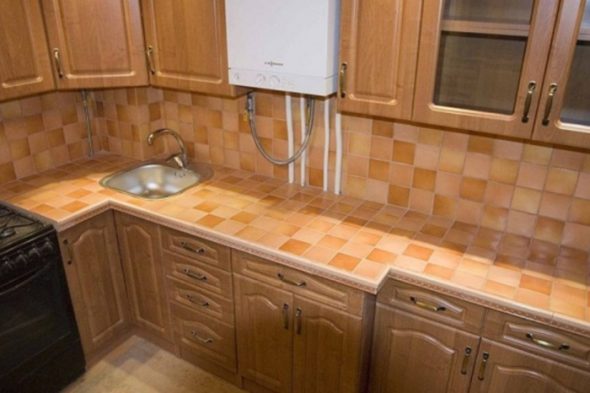
The tabletop can be monotonous, have a simple pattern of multicolored tiles, for example, stripes of different colors.
Facing the kitchen work surface with polished tiles, combined with wooden facades of cabinets, will bring a touch of luxury and nobility.
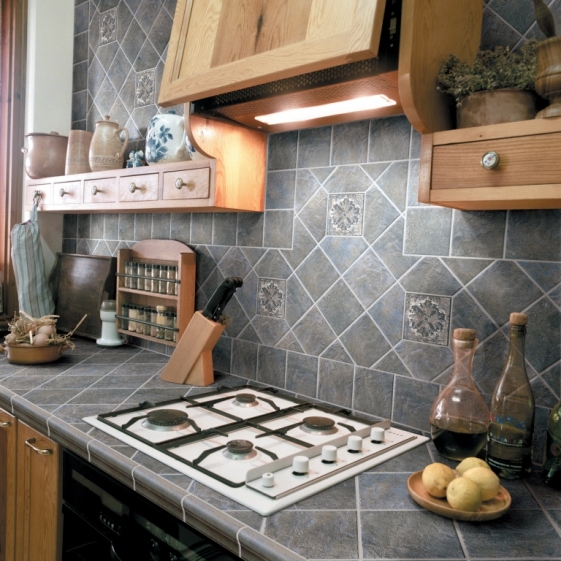
To avoid mistakes, read the rules and the order of installation of the tile.
Experiment in your kitchen with porcelain stoneware, the result, of course, will please.
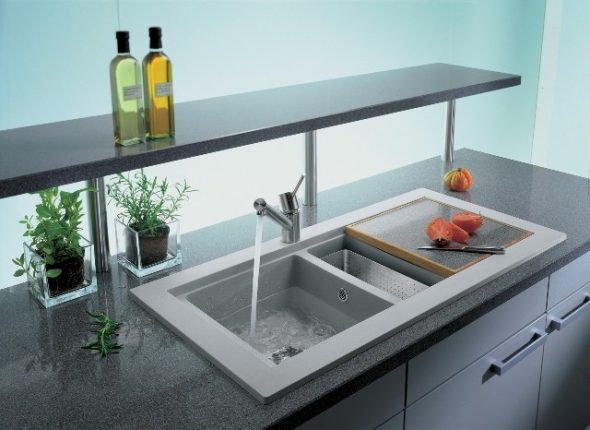
These countertops are distinguished by their practicality and excellent appearance.
VIDEO: Kitchen countertop tiles.
Worktops in the interior of the kitchen - 50 photo ideas:
 Bottle rack in the kitchen or set the pan not only in the nightstand.
Bottle rack in the kitchen or set the pan not only in the nightstand.
 How to paint your own kitchen set
How to paint your own kitchen set
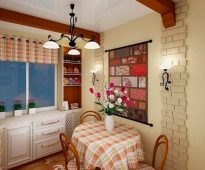 Tips for decorating the wall in the kitchen near the table
Tips for decorating the wall in the kitchen near the table
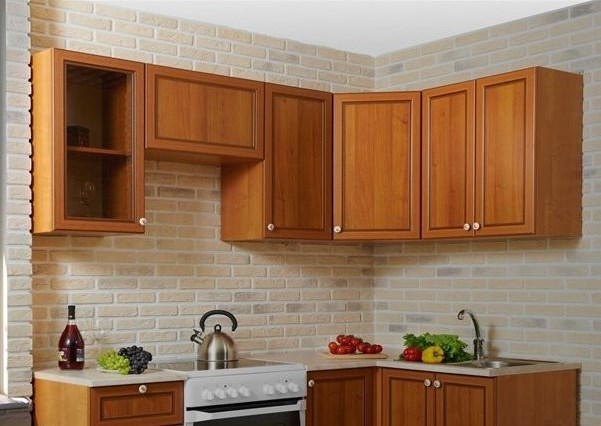 How to attach kitchen cabinets to the bar.
How to attach kitchen cabinets to the bar.
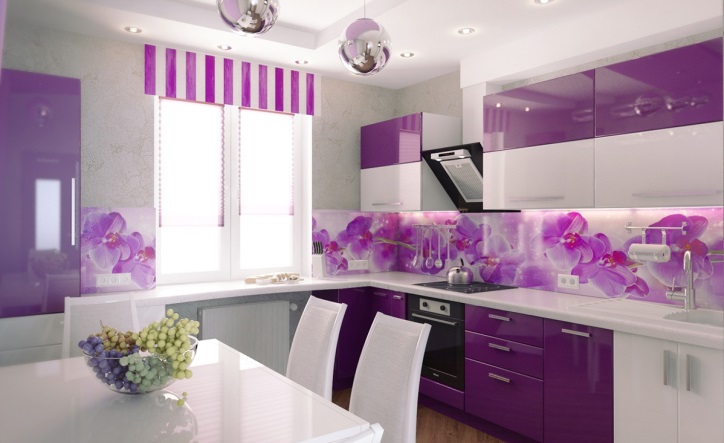 Colors of kitchen sets. What you need to know about choosing the right shade?
Colors of kitchen sets. What you need to know about choosing the right shade?
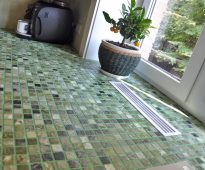 We update the tabletop in the kitchen with our own hands: ways, materials, tools
We update the tabletop in the kitchen with our own hands: ways, materials, tools
